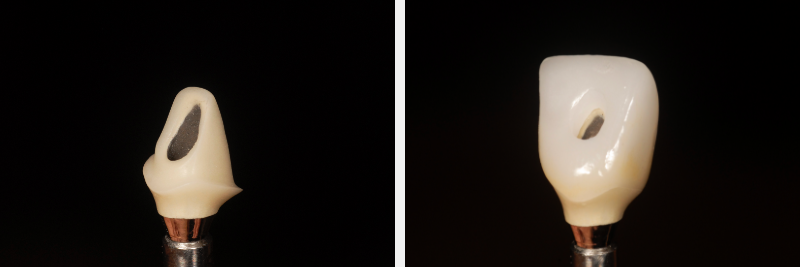When designing an implant restoration, there have traditionally been two options: screw-retained or cement-retained. Each option has its distinct advantages and disadvantages.
In more recent years, there has been a strong push toward using more screw-retained restorations due to the risk and problems of leaving excess cement.1, 2, 3 There are some restorative challenges to having a screw-retained implant restoration.
One challenge I have seen in my practice is checking and adjusting the proximal contacts. It is common for the proximal contacts on screw-retained implant restorations to come back from the technician and be heavy. The process of adjusting the contacts can be laborious, since it can require significant time to repeatedly screw the restoration into place and remove it.
[IMPLANTS: Learn more from Dr. Kinzer in Spear’s hands-on “Implant Restorative Dentistry” workshop and “Implants – The Surgical/Restorative Connection” seminar.]
Another issue of having a screw-retained implant restoration is that it can be limiting, depending on your material selection. If the restoration is designed utilizing a “hybrid” abutment, you can no longer place the restoration back into the porcelain furnace if you wanted to add stain due to the hybrid abutment being bonded together with resin cement. So, if the restoration doesn’t match, you either re-make it or just place it as-is.
A solution to both challenges is designing the screw-retained implant restoration in two pieces (Figures 1, 2A, 2B). This “screw-mentable” design (a crown with a screw hole through it and a separate abutment) can be tried in a traditional cemented-retained implant restoration, thereby making it easier to check and adjust proximal contacts (Figure 3).



In addition, if the restoration needs to be altered, as in this situation where the restoration is too high in value, there is no problem regardless of the materials selected (Figure 4).

Once you have adjusted proximal contacts and the restoration has been stained in the porcelain furnace, the crown and abutment can be bonded together either in the mouth or on the lab bench. The excess cement can easily be cleaned up outside the mouth (Figure 5), before final seating of the restoration (Figure 6).


Greggory Kinzer, D.D.S., M.S.D., is a member of Spear Resident Faculty.
References:
1. In vitro effects of dental cements on hard and soft tissues associated with dental implants. Rodriguez LC, Saba JN, Chung KH, Wadhwani C, Rodrigues DC
J Prosthet Dent. 2017 Jul;118(1):31-35.
2. Characterization of Cement Particles Found in Peri-implantitis-Affected Human Biopsy Specimens. Burbano M, Wilson TG Jr, Valderrama P, Blansett J, Wadhwani CP, Choudhary PK, Rodriguez LC, Rodrigues DC.
Int J Oral Maxillofac Implants. 2015 Sep-Oct;30(5):1168-73.
3. The Interaction of Implant Luting Cements and Oral Bacteria Linked to Peri-Implant Disease: An In Vitro Analysis of Planktonic and Biofilm Growth--A Preliminary Study. Raval NC, Wadhwani CP, Jain S, Darveau RP.
Clin Implant Dent Relat Res. 2015 Dec;17(6):1029-35.